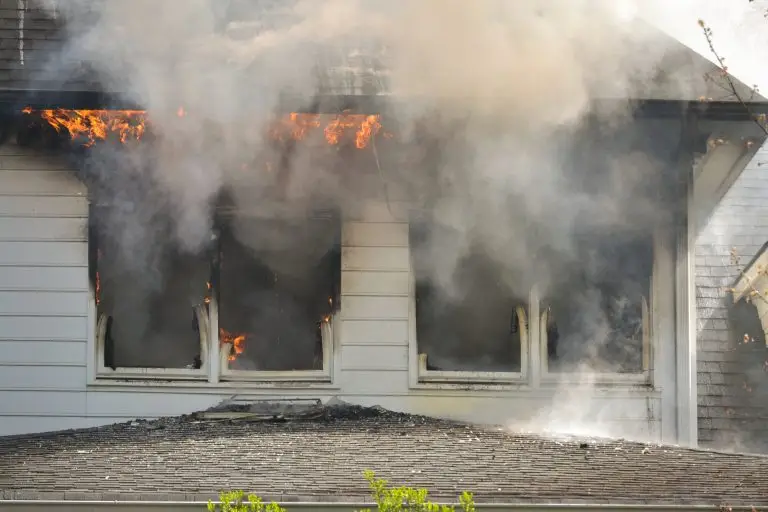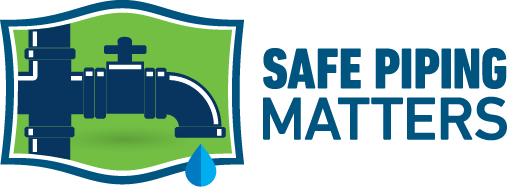
Study: In Fires, Toxic Smoke from Plastic Can Doom Occupants
The construction industry goes to great lengths to reduce the likelihood of fires, designing for safety and implementing extensive fire warning and suppression systems. Building professionals can make structures even safer by paying attention to materials. When fires do occur, evidence increasingly shows that toxic smoke and other contaminants inhaled by fleeing occupants and first responders on the scene represent the biggest threat to human health in both the short and longer term.
A variety of commonly used materials contributes to this problem. PVC plastic piping materials are among the most serious because they contain flammable substances that are toxic when they burn. PVC-based plastics appear in many forms throughout buildings, of course – their growing use is escalating concerns about the risks to safety.
It’s well known that burning plastic produces gases that can negatively affect human health, but the quantity, speed of emission, and composition remain points of discussion. A recent industry study analyzed gases emitted from burning plastic pipes to gauge the risk to human health. Researchers conducted a two-part test in which PVC piping was set ablaze in a controlled environment. A summary of the test procedures and findings appears below.
Test 1
The first test observed various plastic piping materials installed through a wall-penetration setup suitable for a standard commercial building. The test assembly included adequate firestop measures installed by a certified professional and a one-meter-square gypsum wall with a one-hour fire resistance rating (in accordance with UL U465/UL263). Following preparation, the test team ignited the PVC piping and firestop and allowed it to burn for exactly one hour under constant observation, collecting the gases for analysis.
Test 2
The second test – conducted at a different location – sought to evaluate PVC’s toxicity, in accordance with ARMA International’s E800-14, Standard Guidance for Measurement of Gases Present or Generated During Fires. The test did not include the accompanying accessories from the first test, such as firestop or gypsum board. The second test evaluated the off-gassing from PVC piping alone to determine what gases can be attributed to only plastic. Following preparation, a research team conducted a 20-minute burn test in a closed chamber.
Toxicity Results
Both tests found the following gases: hydrogen cyanide (HCN), sulphur dioxide (SO2), hydrogen chloride (HCl), hydrogen fluoride (HF), hydrogen bromide (HBr), carbon dioxide (CO2), carbon monoxide (CO), nitrogen oxide (NOx), and nitrogen dioxide (NO2).
A comparison of results from the wall assembly with those of the piping alone revealed that hydrogen chloride – an established human toxin extremely corrosive to the lungs – was the main product of the pipes alone. It appeared in abundance in both testing environments, revealing that it came specifically from the PVC piping.
Test #1 exceeded the public health limit for hydrogen chloride in just 14 minutes despite the firestopping assembly. Overall, the maximum concentration of this toxic gas reached a disturbingly high level of 709 ppm, and the average concentration reached 120 ppm, far above the 1 ppm health target. Test #2, which had no countermeasures in place, exceeded the health limit in only three minutes. About 8 minutes later, the concentration of hydrogen chloride reached 909 ppm.
Plastic Pipes Endanger Critical Occupant Facilities
These tests indicate that gases released by burning plastic pipes pose a serious threat to the safety of critical-care facilities such as nursing homes, hospitals, retirement homes, rehabilitation centers and schools. During fires, occupants may not be able to escape quickly, exposing them to serious risks from smoke inhalation even in the earliest minutes. Moreover, these buildings often contain large clusters of pipes used for plumbing and other subsystems, meaning that first responders entering the structure to contain the flames would be exposed to hydrogen chloride and other dangerous fumes released from the PVC.
Plumbing, architecture and building experts must take immediate action to ensure the safety of occupants and first responders. Statements from building organizations such the United Association and from first responders like the International Association of Fire Fighters call for a plastic pipe ban in structures where safety is a priority: “All buildings should require the installation of safe, recyclable, non-combustible, and sustainable piping materials for plumbing systems to protect the health and safety of first responders, building occupants and the environment.”
Kevin O’Connor is regarded as one of organized labor’s most effective strategists. He began his career as a firefighter and an advocate at local and state levels. O’Connor rose through the ranks and was appointed various positions of leadership within the International Association of Fire Fighters. Kevin was also elected to chair the National Advisory Council of the Congressional Fire Service Institute. He became the first union official to hold the post and was subsequently awarded the highest honor, the Mason Langford Lifetime Leadership award.
